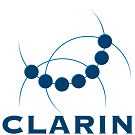Readability: Difference between revisions
No edit summary |
|||
| (4 intermediate revisions by 2 users not shown) | |||
| Line 1: | Line 1: | ||
<languages/> | |||
<translate> | |||
<!--T:1--> | |||
== Assessing readability== | == Assessing readability== | ||
How to assess readability? In this demo you can assess the readability of ten texts by comparing them with each other. The idea is that you assign an absolute score - ranging from 0 (easy) to 100 (difficult) - to each text and motivate your score using the free text field. | How to assess readability? In this demo you can assess the readability of ten texts by comparing them with each other. The idea is that you assign an absolute score - ranging from 0 (easy) to 100 (difficult) - to each text and motivate your score using the free text field. | ||
<!--T:2--> | |||
*[https://lt3.ugent.be/resources/assessing-readability/ Information] | *[https://lt3.ugent.be/resources/assessing-readability/ Information] | ||
* De Clercq, Orphée and Véronique Hoste. 2016. All Mixed Up? Finding the Optimal Feature Set for General Readability Prediction and its Application to English and Dutch. Computational Linguistics, Association for Computational Linguistics, 42(3):457-490. | * De Clercq, Orphée and Véronique Hoste. 2016. All Mixed Up? Finding the Optimal Feature Set for General Readability Prediction and its Application to English and Dutch. Computational Linguistics, Association for Computational Linguistics, 42(3):457-490. | ||
*[https://lt3.ugent.be/assessing-readability-demo/ Demo] | *[https://lt3.ugent.be/assessing-readability-demo/ Demo] | ||
<!--T:3--> | |||
==Classical formulas== | ==Classical formulas== | ||
In this demo, you can enter a Dutch text of maximum 1,000 characters. The text is then analyzed: various text characteristics (word length, sentence length, TTR, ...) are outputted and different scores calculated based on classical readability formulas. In a next phase, the text is also analyzed with a syntactic parser offering insights into the grammatical complexity of the text. | In this demo, you can enter a Dutch text of maximum 1,000 characters. The text is then analyzed: various text characteristics (word length, sentence length, TTR, ...) are outputted and different scores calculated based on classical readability formulas. In a next phase, the text is also analyzed with a syntactic parser offering insights into the grammatical complexity of the text. | ||
<!--T:4--> | |||
*[https://lt3.ugent.be/resources/classical-readability-formula-calculator/ Information] | *[https://lt3.ugent.be/resources/classical-readability-formula-calculator/ Information] | ||
* De Clercq, Orphée and Véronique Hoste. 2016. All Mixed Up? Finding the Optimal Feature Set for General Readability Prediction and its Application to English and Dutch. Computational Linguistics, Association for Computational Linguistics, 42(3):457-490. | * De Clercq, Orphée and Véronique Hoste. 2016. All Mixed Up? Finding the Optimal Feature Set for General Readability Prediction and its Application to English and Dutch. Computational Linguistics, Association for Computational Linguistics, 42(3):457-490. | ||
*[https://lt3.ugent.be/readability-demo/ Demo] | *[https://lt3.ugent.be/readability-demo/ Demo] | ||
<!--T:5--> | |||
==Machine learning== | ==Machine learning== | ||
The demo will process your text by deriving various text characteristics or features and predict a readability score using supervised machine learning techniques. | |||
<!--T:6--> | |||
*[https://lt3.ugent.be/resources/machine-learning-readability/ Information] | *[https://lt3.ugent.be/resources/machine-learning-readability/ Information] | ||
* De Clercq, Orphée and Véronique Hoste. 2016. All Mixed Up? Finding the Optimal Feature Set for General Readability Prediction and its Application to English and Dutch. Computational Linguistics, Association for Computational Linguistics, 42(3):457-490. | * De Clercq, Orphée and Véronique Hoste. 2016. All Mixed Up? Finding the Optimal Feature Set for General Readability Prediction and its Application to English and Dutch. Computational Linguistics, Association for Computational Linguistics, 42(3):457-490. | ||
*[https://lt3.ugent.be/machine-learning-readability-demo/ Demo] | *[https://lt3.ugent.be/machine-learning-readability-demo/ Demo] | ||
<!--T:7--> | |||
==T-scan == | ==T-scan == | ||
T-Scan is an analysis tool for Dutch text, mainly focusing on text complexity. | |||
* [https://github.com/UUDigitalHumanitieslab/tscan/raw/master/docs/tscanhandleiding.pdf Manual (in Dutch)] | * [https://github.com/UUDigitalHumanitieslab/tscan/raw/master/docs/tscanhandleiding.pdf Manual (in Dutch)] | ||
* [https://tscan.hum.uu.nl/tscan/ Tool] | |||
</translate> | |||
Latest revision as of 09:36, 30 May 2024
Assessing readability
How to assess readability? In this demo you can assess the readability of ten texts by comparing them with each other. The idea is that you assign an absolute score - ranging from 0 (easy) to 100 (difficult) - to each text and motivate your score using the free text field.
- Information
- De Clercq, Orphée and Véronique Hoste. 2016. All Mixed Up? Finding the Optimal Feature Set for General Readability Prediction and its Application to English and Dutch. Computational Linguistics, Association for Computational Linguistics, 42(3):457-490.
- Demo
Classical formulas
In this demo, you can enter a Dutch text of maximum 1,000 characters. The text is then analyzed: various text characteristics (word length, sentence length, TTR, ...) are outputted and different scores calculated based on classical readability formulas. In a next phase, the text is also analyzed with a syntactic parser offering insights into the grammatical complexity of the text.
- Information
- De Clercq, Orphée and Véronique Hoste. 2016. All Mixed Up? Finding the Optimal Feature Set for General Readability Prediction and its Application to English and Dutch. Computational Linguistics, Association for Computational Linguistics, 42(3):457-490.
- Demo
Machine learning
The demo will process your text by deriving various text characteristics or features and predict a readability score using supervised machine learning techniques.
- Information
- De Clercq, Orphée and Véronique Hoste. 2016. All Mixed Up? Finding the Optimal Feature Set for General Readability Prediction and its Application to English and Dutch. Computational Linguistics, Association for Computational Linguistics, 42(3):457-490.
- Demo
T-scan
T-Scan is an analysis tool for Dutch text, mainly focusing on text complexity.
